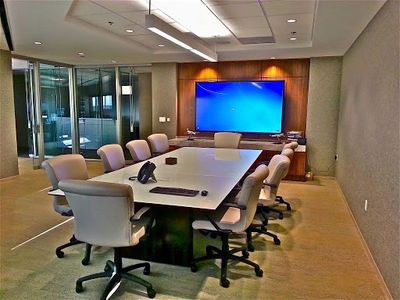ENterprise telephony

The Enterprise Telephony market has evolved over the past several years and is now offering a number of business advantages with new technologies such as IP and Unified Communications. Our expertise can cater solutions in following Technologies:
· IP PBX
· Hybrid IP/TDM PBX
· Traditional PBX*
· Traditional Key System*
· Telephones
· Enterprise Voice Applications (revenue only)
Enterprise VoIP is basically a more powerful, secure and scalable version of residential VoIP applications. For many organizations, the attraction of enterprise VoIP centers on its ability to integrate other Internet applications with calling features. Ideally, a caller on enterprise VoIP can simultaneously chat, transfer files, share screens and email through one interface, increasing the depth and ease of communication.
Add-ons to VoIP service vary by provider, but may include:
· Higher encryption options
· Private internal phone networks similar to a private branch exchange (PBX)
· Customized answering, hold and call waiting features
· Automated call handling
· Conference calling
· In-program chat, data transfer, screen sharing and other multi-user functions
· Call center setups.
Telepresence
Telepresence refers to a set of technologies which allow a person to feel as if they were present, to give the appearance of being present, or to have an effect, via telerobotics, at a place other than their true location.
Telepresence requires that the users' senses be provided with such stimuli as to give the feeling of being in that other location. Additionally, users may be given the ability to affect the remote location. In this case, the user's position, movements, actions, voice, etc. may be sensed, transmitted and duplicated in the remote location to bring about this effect. Therefore information may be traveling in both directions between the user and the remote location.
A popular application is found in telepresence videoconferencing, the highest possible level of videotelephony. Telepresence via video deploys greater technical sophistication and improved fidelity of both sight and sound than in traditional videoconferencing. Technical advancements in mobile collaboration have also extended the capabilities of videoconferencing beyond the boardroom for use with hand-held mobile devices, enabling collaboration independent of location.
A typical video conference system includes a codec, monitor and sound system. In conference rooms for many people, additional monitors, microphones and speakers are often added to create a more full sense of the moving video and audio between video conference locations. Telepresence changes all of this.
Telepresence systems are highly integrated multi-codec, multi-monitor, multi-microphone and multi-channel speaker systems. The objective of a Telepresence system is to present interactive video and audio between locations with near life like audio quality and with near life size video images.


Audio/Video Conference
This is a very broad category of online tools, incorporating a range of options from free one-to-one audio conferencing all the way to more sophisticated and expensive tools such as Polycom which allow multiple sites with entire classes participating using video and audio.
Video and audio, or just audio connection between two computers communicating via the Internet.
Transmitted to & received from any computer in any location that has Internet connection (broadband desirable for effective use). Teacher must have microphone, can have camera. Ideally end users have microphone (camera not essential) for synchronous communication.
· Technology requirements for video/audio conferencing:
· Computer with access (ideally broadband) to the Internet.
· Browser.
· Speakers to hear audio.
· Microphone (to contribute audio).
· Web camera to contribute video.
Copyright © 2024 Netstack Infratech Private Limited - All Rights Reserved.